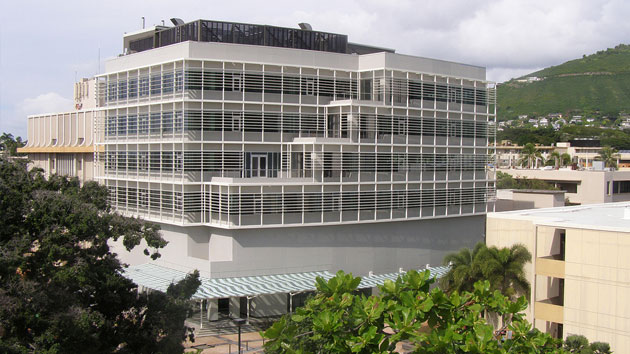

The University of Hawaiʻi is one of the founding partners of a new initiative led by Clemson University to enable a national network of Advanced Cyberinfrastructure Research and Education Facilitators (ACI-REFs) that will broaden the research and education impacts of advanced computing resources at campuses across the country.
Advanced cyberinfrastructure refers to high-performance computing systems, massive data storage systems and visualization environments, all linked together by software and high-performance networks to enable human collaborations that improve education and research productivity and enable breakthroughs not otherwise possible.
The National Science Foundation awarded the group $5.3 million over two years to broaden cyberinfrastructure education and outreach through this network. Besides Clemson and UH, the other collaborating institutions are the University of Southern California, the University of Utah, the University of Wisconsin and Harvard University.
The project, called the Advanced Cyberinfrastructure—Research and Educational Facilitation: Campus-Based Computational Research Support, is a consortium that brings together education and research institutions that are committed to the vision of advancing scientific discovery by creating a national network of advanced cyberinfrastructure facilitators.
The project staff will be located on the collaborating campuses. They will be fully embedded in their local technology support environments so they can both extend the reach and impact of the campus as well as make national research computing infrastructure available for local students and faculty.
Gwen Jacobs, UH director of cyberinfrastructure in Information Technology Services, will lead UH participation in the project. UH will be able to hire two advanced cyberinfrastructure facilitators for two years under the initial project grant.
The consortium is forging a nationwide alliance of educators to empower local campus researchers to be more effective users of advanced cyberinfrastructure. In particular, the project seeks to work with scholars and faculty members who traditionally have not benefitted from the power of high-performance computing but who recognize that their research requires access to more computational power than can be provided by their desktop machines.
“Data-intensive science and engineering is a major thrust for the Hawaiʻi Innovation Initiative (HI2), and the advanced cyberinfrastructure facilitator capability that will be supported is exactly what we need to help many of our gifted faculty and students take their scholarship to the next level by leveraging local and national cyberinfrastructure and collaborations,” said David Lassner, UH interim president.
Read the news release for more on the project.
The state-of-the-art, six-story, 74,000-square-foot University of Hawaiʻi Information Technology Center was dedicated December 2013.
About the Hawaiʻi Innovation Initiative (HI2)
The University of Hawaiʻi is working in partnership with the private sector and government to build a thriving $1-billion research enterprise in Hawaiʻi that will develop a third major economic sector for the state, create thousands of high-quality living-wage jobs, and address the challenges and opportunities that face our communities and the world to improve our quality of life.

